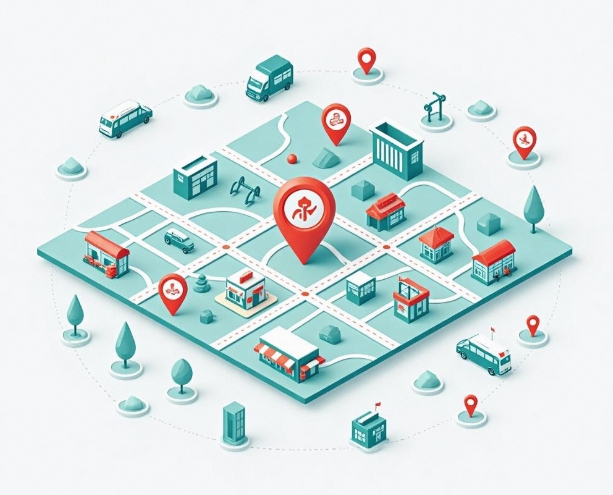Shenzhen Local Life Services Mall Development (O2O)
- latest articles
- 1.DApp Development & Customization: Merging Diverse Market Needs with User Experience 2.Analysis of the Core Technical System in DApp Project Development 3.How to achieve cross-chain interoperability in Web3 projects? 4.How does the tokenization of points reconstruct the e-commerce ecosystem? 5.How to Set and Track Data Metrics for a Points Mall? 6.What is DApp Development? Core Concepts and Technical Analysis 7.Inventory of commonly used Web3 development tools and usage tips 8.Development of a Distribution System Integrated with Social E-commerce 9.Six Key Steps for Businesses to Build a Points Mall System 10.What is DApp Development? A Comprehensive Guide from Concept to Implementation
- Popular Articles
- 1.Future Trends and Technology Predictions for APP Development in 2025 2.Analysis of the DeFi Ecosystem: How Developers Can Participate in Decentralized Finance Innovation 3.From Zero to One: How PI Mall Revolutionizes the Traditional E-commerce Model 4.DAPP Development | Best Practices for Professional Customization and Rapid Launch 5.Recommended by the Web3 developer community: the most noteworthy forums and resources 6.From Cloud Computing to Computing Power Leasing: Building a Flexible and Scalable Computing Resource Platform 7.How to Develop a Successful Douyin Mini Program: Technical Architecture and Best Practices 8.Shared Bike System APP: The Convenient Choice in the Era of Smart Travel 9.How to Create a Successful Dating App: From Needs Analysis to User Experience Design 10.From Design to Development: The Complete Process of Bringing an APP Idea to Life
With the development of the internet, traditional business models are undergoing transformation while also giving rise to new business forms. Especially in the field of local life services, the O2O (Online to Offline) model has become a focus of attention for an increasing number of entrepreneurs and investors. As a Special Economic Zone in China, Shenzhen not only experiences rapid economic development but also possesses a strong spirit of innovation, making it a testing ground for the O2O model. How to develop a local life services marketplace on this large platform is a challenge faced by many enterprises. This article will delve into the development of Shenzhen's local life services marketplace, analyze the application of the O2O model, and explore how to leverage this model to promote local business development.
Overview of the O2O Model
O2O is a business model that integrates online and offline commercial activities. In this model, consumers perform operations such as information searches, product browsing, and online payments through internet platforms (such as websites, apps, etc.), while the actual goods or services are fulfilled at physical stores or service locations. This model breaks the limitations of traditional business channels, achieving seamless integration between online and offline, and creating more transaction opportunities for businesses and consumers.
Characteristics of the O2O Model
Integration of Online and Offline
The core concept of O2O is to combine online platforms with offline entities to provide consumers with more convenient and diverse service experiences. Online platforms facilitate information flow and user interaction, while offline entities are responsible for service fulfillment and product delivery.Real-Time Nature
The O2O model relies on the real-time nature of geographic location. Businesses can provide personalized services based on consumers' location information, thereby speeding up purchasing decisions. For example, in Shenzhen's local life services marketplace, users can select the nearest restaurants, beauty salons, or other service venues based on their location.Convenience
The O2O model significantly enhances consumer convenience. Consumers can shop, pay, and leave reviews anytime using devices like smartphones and computers, saving a lot of time spent waiting in queues offline.Diverse Payment Methods
Online payment is a key component of the O2O model. Consumers can make payments through various methods such as Alipay and WeChat Pay, improving the smoothness of transactions.
Current State of Shenzhen's O2O Market
Shenzhen is one of China's most innovative cities and a pioneer in internet technology. In recent years, with changes in lifestyle and continuous technological advancements, the O2O model has been widely adopted in Shenzhen. Whether in dining, home services, beauty and fitness, car maintenance, or other daily life services, Shenzhen's O2O market is thriving.
Characteristics of Shenzhen's O2O Market
Innovation-Driven
Shenzhen has a strong innovative atmosphere, and many traditional industries have undergone qualitative leaps driven by internet transformation. Many O2O platforms provide more intelligent and personalized services through technological innovations, such as smart recommendation systems and virtual reality applications, enriching the user experience.Mobile Internet Penetration
Shenzhen has a high smartphone penetration rate, and the widespread use of technologies like mobile payments and instant messaging provides a solid foundation for the development of the O2O model. Consumers can enjoy local life services anytime, anywhere through their phones, greatly enhancing convenience.Diverse Consumer Demands
With rising living standards, Shenzhen residents have increasingly diverse demands for local life services. From basic needs like dining and transportation to higher-end areas like health and entertainment, consumers have higher expectations for service quality, speed, and personalization. This provides significant market opportunities for the development of O2O marketplaces.
Key Elements for Developing Shenzhen's Local Life Services Marketplace
To develop a successful local life services marketplace, especially in an innovative city like Shenzhen, several key elements must be addressed to ensure the platform gains user recognition and market success.
1. User Experience First
Whether in the design of the online marketplace or the implementation of offline services, user experience is the core of the O2O model's success. User experience encompasses not only interface design and operational convenience but also service quality and user-platform interaction. To enhance user experience, developers must ensure platform smoothness, responsiveness, and a robust user feedback mechanism. Continuous optimization is key to improving user retention and conversion rates.
2. Data-Driven and Intelligent Services
Through big data and artificial intelligence technologies, O2O marketplaces can provide consumers with more accurate personalized recommendations and services. For example, in Shenzhen's local life services marketplace, users can discover their favorite restaurants, shops, or service items through platform data analysis. By analyzing user behavior data, the platform can push services that best meet user needs, thereby increasing user loyalty and satisfaction.
3. Supply Chain and Service Provider Management
Developing an O2O marketplace is not just about building an online platform; managing offline service providers is another critical aspect. The platform needs to establish strong partnerships with local businesses to ensure service quality and timeliness. Especially in the competitive Shenzhen market, resource integration and supply chain management are particularly important. The platform should use data analysis to optimize supplier selection and service quality management, thereby improving the overall system's operational efficiency.
4. Localization and Regional Advantages
Shenzhen's market has distinct local characteristics, and localized services are key to the success of the O2O model. Developers need to deeply understand Shenzhen's consumption habits and demands, tailoring platform content and services to local needs. For example, in Shenzhen's dining market, consumers may prefer Cantonese cuisine or local specialties, and the platform should recommend relevant businesses based on these preferences. By leveraging regional advantages, the platform can better meet consumer demands and enhance market competitiveness.
Operational Strategies for Shenzhen's Local Life Services Marketplace
After developing an O2O marketplace, effective operation is also a critical step. Below are some operational strategies for Shenzhen's local life services marketplace.
1. Increase Brand Exposure
Brand exposure is the first step for an O2O marketplace to attract users. Given the intense competition in Shenzhen's market, the platform needs to promote through multiple online and offline channels. Online methods include social media, search engine optimization (SEO), and content marketing, while offline methods include subway and bus advertisements to enhance brand awareness.
2. User Incentives and Promotional Activities
To attract users to the local life services marketplace, the platform can increase user loyalty through incentives and promotional activities. For example, methods like reward points, red envelopes, and first-order discounts can encourage users to make purchases on the platform, turning them into regular customers.
3. Deep Collaboration with Local Businesses
O2O marketplaces need to establish deep collaborations with local businesses. It's not just about the platform providing online traffic; businesses must also offer high-quality offline services. The platform can encourage better services through profit-sharing and joint marketing activities, thereby enhancing the overall user experience.
4. Focus on Word-of-Mouth Marketing
Word-of-mouth marketing is a crucial strategy in O2O marketplace operations. Positive reviews and recommendations from users can effectively attract more potential customers. The platform should encourage users to leave reviews, improve service quality and user satisfaction, and gradually build a loyal user base.
Conclusion
As China's city of innovation, Shenzhen provides unique conditions for the implementation of the O2O model. The development of a local life services marketplace is not only a business opportunity but also a crucial step in upgrading the city's commercial ecosystem. In the future, the O2O model will be widely applied in more fields, and Shenzhen will continue to be a frontier city for innovation and transformation, driving the further development of local life services marketplaces.
-

How does the tokenization of points reconstruct the e-commerce ecosystem?
With the continuous advancement of internet technology and the gradual prolifera···
-

How to Set and Track Data Metrics for a Points Mall?
With the rapid development of the e-commerce industry, points malls, as a common···
-

Development of a Distribution System Integrated with Social E-commerce
With the rapid development of internet technology, the e-commerce industry has e···

 Blockchain
Blockchain












